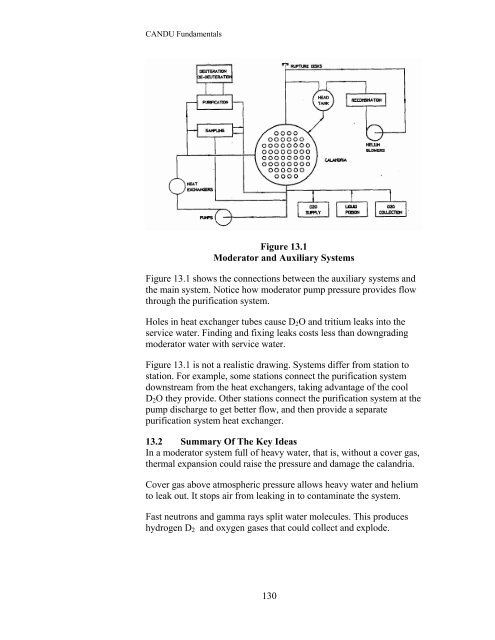13 Moderator Auxiliary Systems
13 Moderator Auxiliary Systems
13 Moderator Auxiliary Systems
Create successful ePaper yourself
Turn your PDF publications into a flip-book with our unique Google optimized e-Paper software.
CANDU Fundamentals<br />
Figure <strong>13</strong>.1<br />
<strong>Moderator</strong> and <strong>Auxiliary</strong> <strong>Systems</strong><br />
Figure <strong>13</strong>.1 shows the connections between the auxiliary systems and<br />
the main system. Notice how moderator pump pressure provides flow<br />
through the purification system.<br />
Holes in heat exchanger tubes cause D 2 O and tritium leaks into the<br />
service water. Finding and fixing leaks costs less than downgrading<br />
moderator water with service water.<br />
Figure <strong>13</strong>.1 is not a realistic drawing. <strong>Systems</strong> differ from station to<br />
station. For example, some stations connect the purification system<br />
downstream from the heat exchangers, taking advantage of the cool<br />
D 2 O they provide. Other stations connect the purification system at the<br />
pump discharge to get better flow, and then provide a separate<br />
purification system heat exchanger.<br />
<strong>13</strong>.2 Summary Of The Key Ideas<br />
In a moderator system full of heavy water, that is, without a cover gas,<br />
thermal expansion could raise the pressure and damage the calandria.<br />
Cover gas above atmospheric pressure allows heavy water and helium<br />
to leak out. It stops air from leaking in to contaminate the system.<br />
Fast neutrons and gamma rays split water molecules. This produces<br />
hydrogen D 2 and oxygen gases that could collect and explode.<br />
<strong>13</strong>0
















